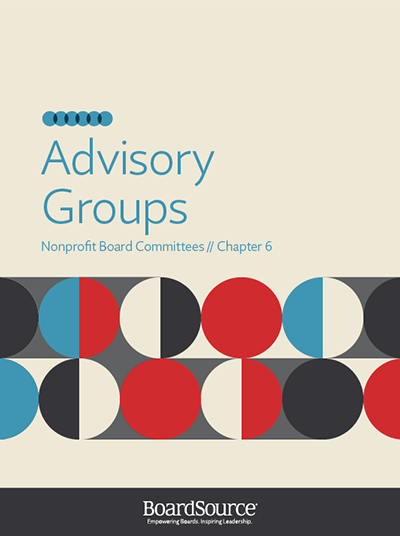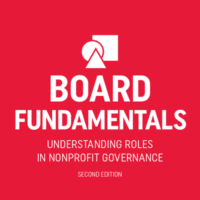Nonprofit Board Committees: Advisory Groups
- Product Details
-
- Format
- Editor
- Ellen Hirzy
- Publication Date
- 2018
- Number of Pages
- 46
- Level
- 201
$38.00
Overview
Although more than one-third of nonprofits employ advisory groups, many are not using them to their full potential. Often, they are formed because they seem like a good way to boost an organization’s professional qualifications or engage key community leaders in the organization’s work. Neither of these reasons is wrong — but both are incomplete.
A well-conceived advisory group must be formed with a purpose and in a way that benefits both the individuals who serve on the advisory group and the nonprofit. An advisory group can open many doors: It can bolster your impact on your constituency; it can add vital support and expertise to your organization; it can bring intellectual, social, and political capital to your nonprofit; and it can perform tasks that are crucial to your mission. But first, nonprofit leaders must be clear about why they are forming an advisory group or what it should do.
Questions answered in this chapter from Nonprofit Board Committees include the following:
- What’s the difference between a governing board and an advisory group?
- What are some typical functions for advisory groups?
- How can we be sure we’re forming an advisory group for the right reasons?
- What structure and practices help advisory groups succeed?
- How will we know that we should disband an advisory group that has met its goals or outlived its usefulness?
This PDF includes the first chapter of Nonprofit Board Committees — Transforming Committee Structure — as well as the Advisory Groups chapter.




